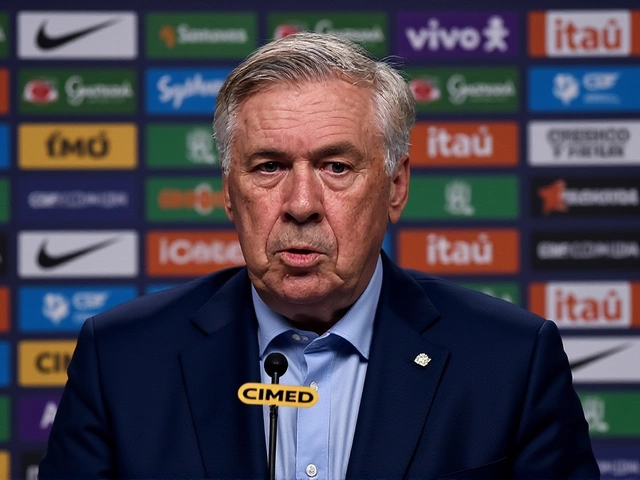The same cloud that powers your shopping cart is now grading a quarterback’s heartbeat. As Amazon launches its fourth exclusive season of Thursday Night Football, Prime Video is leaning harder into artificial intelligence and live data—adding tools that aim to make the game feel smarter without drowning fans in numbers.
The new features will appear first on Prime Vision with Next Gen Stats, Amazon’s alternative broadcast that acts like a lab. It uses a high-sky camera angle, overlays built on player-tracking data, and real-time models to explain what’s actually happening on the field. The best ideas often graduate to the main feed with Al Michaels and Kirk Herbstreit—if they prove they help, not distract.
Amazon’s latest batch includes a headliner called Pocket Health, a visual meter that shows a quarterback’s danger level as the pass rush closes in. When protection breaks down, the meter turns red. The other big addition is a late-game package called End of Game, which tries to answer the only question that matters in a tight finish: What has to happen for my team to win? It breaks that into three metrics—Path to Victory, Time Remaining Prediction, and Victory Formation—so the math behind the moment is right on screen.
Alex Strand, Prime Video’s senior coordinating producer, and TNF analytics lead Sam Schwartzstein—a former Stanford offensive lineman—helped shape the rollout. Their rule of thumb: show the right stat at the right time, and keep the core broadcast feel intact. You won’t see every graphic on every snap. But Herbstreit has the data on his monitor, so when he says a blitz is coming or a team should kneel, he’s got numbers to back it up.
What’s new on screen this season
Pocket Health is built for a split-second sport. Using player location data and computer vision, it estimates how quickly defenders will reach the quarterback and how well the line is holding up. Think of it as a live readout of pocket stability. On a three-step drop, you might see a steady green bar. On a busted pickup with a free rusher, the bar flashes red before the hit arrives—good TV and useful context for why a throw sailed, a sack happened, or a scramble made sense.
The End of Game suite tackles the chaos of late-game strategy. Here’s what it’s looking to explain:
- Path to Victory: The plausible routes for a comeback, factoring score, field position, timeouts, two-minute warning, and clock mechanics. It might show, for example, that a trailing team needs a defensive stop inside 1:20, a drive reaching the 35-yard line for a makeable field goal, and one sideline completion to preserve a timeout.
- Time Remaining Prediction: An estimate of how much clock will be left after a stop, a punt, or a field goal try. This helps viewers understand why a defense might defend the boundary or why an offense calls a run instead of a quick out.
- Victory Formation: The moment the math says a team can kneel it out. No more guesswork about whether another play is needed—this flags the exact point at which the clock becomes the opponent.
These tools sit on top of a stack Prime Video has been building over multiple seasons. Earlier innovations—Defensive Alerts, Prime Targets, Coverage ID (spotting defensive shells before the snap), and Pressure Alert—earned enough traction on Prime Vision to jump to the main telecast. That pipeline is the point: test in the lab, keep what works, ditch what doesn’t.
The high-sky camera remains a difference-maker. It shows spacing, route concepts, and rotations in a way the usual sideline angle can’t. It also makes data overlays readable: labels aren’t covering faces, and route lines aren’t cluttering the ball. When things go viral on Prime Vision—a disguised pressure perfectly diagnosed before the snap, or an overlay calling a pick six in real time—it’s usually that angle doing heavy lifting.
Behind the scenes, the tech is classic Amazon. AWS handles the heavy compute: video ingest, model inference, and sub-second rendering so the overlays sync to the live feed. Computer vision tracks player movement. The system has to be fast enough to draw a pressure gauge before the quarterback hits the top of his drop, and stable enough to hold up under the audience spikes that come with late drives. Producers add a human layer—former players and on-air analysts who sign off on thresholds so a graphic doesn’t contradict basic football sense.
That human calibration matters. A pressure model can say the pocket is collapsing, but if a quarterback is rolling into a designed bootleg, the line between threat and plan gets fuzzy. That’s where producers and analysts step in, choosing when to surface a graphic and when to let the picture and the call breathe. The goal is to serve the story, not to steal the frame.
There’s also attention to clarity for casual fans. End-of-game strategy is where broadcasts often lose people—timeouts, ten-second runoffs, two-minute quirks. By turning that into simple, visual checkpoints, Prime Video is betting it can keep newcomers engaged without talking down to diehards who already count clock and timeouts in their heads.
Why Amazon’s bet matters to fans—and advertisers
Amazon says the 2024 TNF season hit record highs in key adult demographics, marking the strongest season in the package’s 19-year run. Female viewership grew at a double-digit clip for a second straight year. That’s not just bragging rights. Live sports is one of the few places that still delivers real-time, communal viewing, and those audiences are exactly what marketers chase.
The ad numbers back that up. Prime Video reports its live sports viewers showed 60% higher attention rates for commercials and were 40% more likely to buy something after seeing an ad compared to traditional linear audiences. Interactive Video Ads—think a QR code or a click-to-learn-more prompt—delivered 28% higher purchase rates last season.
Why would that be? Start with identity. Prime Video knows who’s logged in, what device they’re on, and how often they watch. Pair that with an NFL game and you get a clean signal: an engaged, authenticated viewer with the remote in hand. Add shoppable ad formats and a phone within reach, and conversion friction drops. Advertisers like that math—especially when the household income profile trends higher than linear TV averages.
Amazon is also trying to make the ad experience feel less like an interruption and more like an extension of the broadcast. The company calls it collaborative, interactive advertising: spots that invite a quick scan or click for more info, sometimes tied to what fans are seeing on the field. The promise is fewer wasted impressions and a clearer read on what worked, thanks to first-party data.
There’s a business reason for all this experimentation. Media rights are expensive, and tech companies entering live sports need more than tune-in. They need proof that the stream drives action—merch sales, app downloads, sign-ups—so the rights bill pencils out. When Amazon shows higher ad attention and purchase likelihood, it’s making a case that its version of a football audience is more valuable than the average TV crowd.
Recognition is coming from inside the industry too. Prime Video’s NFL analysis work is a finalist for Best in AI at the Sports Business Awards: Tech, a nod to the idea that broadcast innovation isn’t just about 4K resolution or new camera toys. It’s about the smart layer on top—surfacing the moment that matters, in time to care about it.
The 2025 slate opens with the Green Bay Packers hosting the Washington Commanders, a clean stage to show how the new features play. Expect the rollout to be staggered. Not every model is ready for prime time on night one, and Amazon tends to iterate on-air. If a graphic confuses people, it gets tuned. If fans love it, you’ll see it more. If Herbstreit can use it to explain a disguised coverage or a two-minute drill without breaking rhythm, it sticks.
For viewers, the upside is simple: fewer arguments about clock math, better explanations for why plays succeed or fail, and a real-time sense of risk around the quarterback. For players and coaches, there’s a subtle benefit—credit for protection that holds up, or for a blitz package that actually threatens, not just looks scary.
There’s still a line to walk. Too many overlays can turn a great play into a crowded screen. Amazon’s team says the answer is restraint, with models that guide the call more than they dominate it. The promise of Prime Vision is that you can watch a normal game—or you can watch the game with the hood up. The tech is there either way.
In short, Prime Video is betting that fans want the truth of the game closer to real time: the pressure that’s coming, the seconds that are slipping, the moment a lead becomes a sure thing. If the execution matches the ambition, this season could be the clearest version yet of what an AI-augmented football broadcast feels like.





